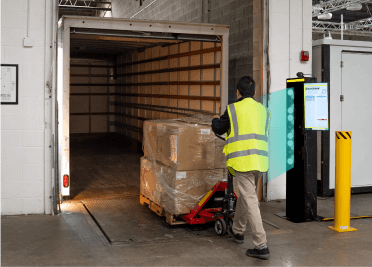What happens when a barcode is unreadable? The answer: significant expense and operational disruption. When a barcode fails to scan—a "no-read"—it triggers a costly chain reaction. The item is either rejected, requiring manual data entry by a worker, or worse, it slips through unnoticed, resulting in incomplete information in your database. This not only wastes time and money but also complicates the tracking and tracing of products, posing risks across the entire supply chain. Managing and preventing no-reads is crucial to maintaining efficiency and accuracy in manufacturing and logistics operations.
So, what causes no-reads? While it may seem like a straightforward question, uncovering the root cause can be complex, often requiring multiple steps and specialized equipment. If there’s no visible damage, like a scratch, finder pattern disruption, or quiet zone violation, a barcode verifier is the go-to tool for diagnosing the issue. Unlike barcode readers that simply identify unreadable codes, verifiers dig deeper by testing all aspects of the barcode's symbology and decoding process, highlighting potential weak points that could lead to no-reads.
Why Barcode Verification Matters
Any organization involved in producing, printing, or marking barcodes is at significant risk of inefficiencies if they’re not using barcode verification. Barcode verification is the only reliable method to ensure that codes will remain readable throughout the supply chain.
What happens if barcodes aren’t readable? At best, downstream workers—whether in warehouses or at checkout counters—will have to manually enter the information, which is time-consuming and prone to errors. At worst, major retailers or government agencies might reject the products outright or impose fines for non-compliance with barcode requirements.
AbeTech's Expertise in Barcode Verification
As an expert in the field, AbeTech offers a comprehensive solution to prevent no-reads and ensure that your barcodes are always up to standard. Here’s how you can start implementing proper barcode testing in three simple steps:
- Select the Right Barcode Verifier:
- Identify the Symbology and Standards: Begin by understanding the symbology type and the quality standards (e.g., GS1 or ISO) that apply to your operations.
- Consider the Size and Resolution Needs: Ensure the verifier has a field of view large enough to accommodate your largest barcodes, while also maintaining high enough resolution for the smallest ones.
- Evaluate Software Usability: The software should be user-friendly and capable of grading barcodes against the relevant standards with ease.
- Create a Barcode Testing Protocol:
- Establish Consistent Testing: Implement a routine for regular barcode verification to ensure ongoing quality. This includes having a plan for corrective actions when barcodes fail.
- Diagnose and Correct Issues: Part of your protocol should involve diagnosing the root cause of any failures and swiftly correcting the printing process to avoid future no-reads.
- Determine the Best Sampling Method:
- Continuous vs. Random Sampling: Decide whether inline barcode verification or random sampling suits your needs. While traditional barcode testing often uses periodic sampling (e.g., every 20 or 90 minutes), advancements in technology now allow for ISO-compliant inline verification, providing real-time grading and reporting for 100% of your barcodes.
Ongoing Commitment to Barcode Quality
Barcode testing is not a one-time task; it’s a continuous process that should be integrated into your standard operating procedures. With AbeTech’s expert guidance, you can ensure that your barcodes are consistently readable, minimizing the risk of no-reads and maximizing operational efficiency. Remember, when a no-read occurs, it’s not random—it’s preventable. By implementing and maintaining a robust barcode verification process, your codes will scan accurately every time, safeguarding your bottom line and ensuring compliance with industry standards. Schedule a consultation with an AbeTech Expert today.










